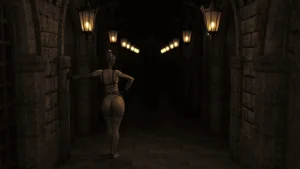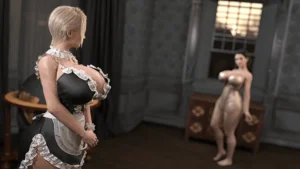
Shadows
Play Shadows
Shadows review
Discover what makes Shadows stand out in its genre—gameplay, story, and immersive experience
If you’re curious about Shadows and what sets it apart from other titles in its category, you’re in the right place. Shadows has carved out a niche with its distinctive approach to storytelling, atmospheric design, and interactive elements. In this deep dive, I’ll share my personal experiences, break down the game’s core mechanics, and highlight what makes it memorable—whether you’re a seasoned player or just starting out. Let’s step into the world of Shadows and see what awaits.
What Is Shadows? Game Overview and First Impressions
Setting the Scene: The World of Shadows
Stepping into the Shadows game setting is like entering a waking dream. You don’t just see this world; you feel it. The air is thick with the scent of recent rain on cobblestones, and a perpetual, soft twilight hangs over everything, casting long, distorted silhouettes that seem to have a life of their own. 🕵️♂️ This isn’t your typical dark fantasy realm; it’s a place where the boundary between the physical and the ephemeral is paper-thin. The premise is deceptively simple: you are a “Seeker,” an individual who can perceive and interact with the sentient shadows that ordinary people overlook. Your journey begins in the rain-slicked, gaslit streets of a city that feels like a forgotten memory of Victorian London, if London were built on a foundation of forgotten secrets and spectral echoes.
The Shadows atmosphere is the game’s true protagonist. It’s a masterclass in environmental storytelling. 🔊 The sound design is impeccable—distant, mournful cello notes blend with the drip-drip-drip of water and the faint, whispering chatter of the shadows themselves. You’ll find yourself stopping constantly, not just to admire the gorgeous, painterly visuals, but to listen. A whisper from a dark alley might give you a clue, or the sudden silence from a bustling shadow-market might signal danger. This world is alive, breathing, and it’s constantly communicating with you. The Shadows game setting is less a backdrop and more a character you need to learn to understand.
To give you a clearer idea of how this world stands out, let’s compare it to some familiar genre titles.
| Aspect | Shadows | Typical Genre Titles |
|---|---|---|
| Visual Style | Painterly, gaslight-fantasy with a muted, ethereal color palette | Often gritty, hyper-realistic, or high-contrast Gothic |
| Audio Focus | Ambient, diegetic sounds and whispers are key gameplay mechanics | Orchestral scores and dramatic stingers for tension |
| World Interaction | Engaging with light sources and shadows to solve puzzles and progress | Standard object manipulation and combat-based progression |
| Population | The world is populated by sentient shadows and echoes of the past | Populated by humanoids, monsters, and standard NPCs |
This unique approach to the Shadows game setting fundamentally changes how you play. You’re not just fighting monsters; you’re negotiating with darkness, bargaining with fear itself. It’s this core philosophy that creates one of the most significant Shadows unique elements. The world isn’t just dangerous; it’s conversational. 🗣️
First Steps: How Shadows Welcomes New Players
The Shadows gameplay introduction is a thing of beauty. It understands that its core mechanics are unconventional, and it doesn’t just throw you into the deep end. Instead, it gently submerges you. The game begins with your character, disoriented and newly aware of their ability, in a quiet, misty garden. This serves as the Shadows tutorial, but it’s so seamlessly woven into the narrative that it never feels like a lesson. A soft, guiding voice—which you soon realize is a benevolent shadow—talks you through your first interactions.
The Shadows tutorial focuses on two primary mechanics: perception and persuasion. You learn to focus your vision to see the hidden threads of stories left behind in the environment, glowing like golden spiderwebs. Then, you encounter your first non-hostile shadow. The game doesn’t give you a weapon; it gives you a dialogue wheel. Your first real interaction is a conversation where you must choose your tone carefully. Are you empathetic, demanding, or deceptive? The shadow reacts accordingly, and this sets the tone for your entire playthrough. This Shadows gameplay introduction brilliantly establishes that your words and perceptions are your most powerful tools. 💡
This initial foray is crucial for forming your Shadows first impressions. The lack of a traditional combat tutorial is immediately striking and sets the game apart. You’re learning the language of the world before you’re asked to survive in it. The Shadows narrative style is also introduced here, which is deeply personal and reactive. The choices you make in this introductory garden, from which echoes you choose to perceive to how you speak to your shadowy guide, have tangible consequences that you’ll see reflected hours later. It’s a bold statement of intent from the developers: every moment matters.
Personal Anecdote: My First Hour in Shadows
I’ll be perfectly honest, my Shadows first impressions were a mix of bewilderment and awe. 🤯 I remember my first major “wow” moment clearly. I had just left the introductory garden and entered the first district of the city, The Veil. A citizen—a solid, normal-looking person—bumped into me and muttered an apology before hurrying on. But as they passed, their shadow on the wall didn’t. It lingered for a second, turned its head, and winked at me before sliding away to catch up with its owner.
I actually said “Whoa!” out loud to my empty room.
That’s the magic of the Shadows atmosphere. It’s constantly playing with your expectations and rewarding your attention to detail. I spent a good ten minutes just following different people, watching the secret lives their shadows lived completely unbeknownst to them. One shadow was meticulously cleaning a wall its person ignored. Another was dancing while its owner argued with a shopkeeper. This wasn’t just world-building; it was the world showing off. It completely pulled me in.
What surprised me most was how quickly I became invested. I wasn’t a hero on a quest to save the world; I was a curious interloper in a secret society that existed in plain sight. The Shadows narrative style is so effective because it makes you an archaeologist of the present, piecing together stories from whispers and fleeting images. I found myself caring deeply about the petty squabbles and hidden loves of these spectral beings. I once spent 20 minutes helping a lonely shadow find a “lost” luster on a lamppost it admired, simply because its sadness felt so genuine. The game had successfully made me empathize with a silhouette. 🖤
The Shadows unique elements all coalesced in that first hour to create an experience that felt entirely fresh. The Shadows game setting was more than a location; it was a mystery I was desperate to understand. The Shadows gameplay introduction had given me the tools not to fight, but to connect. And my Shadows first impressions were permanently etched in my mind as one of the most captivating openings I’ve ever experienced.
“My first hour in Shadows wasn’t about learning to survive; it was about learning to see. The game handed me a new set of eyes, and the world has never looked the same since.”
Shadows offers a distinctive blend of atmospheric storytelling, engaging gameplay, and memorable characters that set it apart in its genre. While it may not be for everyone—especially those sensitive to mature themes—its unique approach to narrative and immersion makes it a standout experience for the right player. If you’re looking for a game that prioritizes mood, choice, and depth over straightforward action, Shadows is well worth your time. Dive in, explore its world, and see where the story takes you—then share your own journey with fellow players.

























